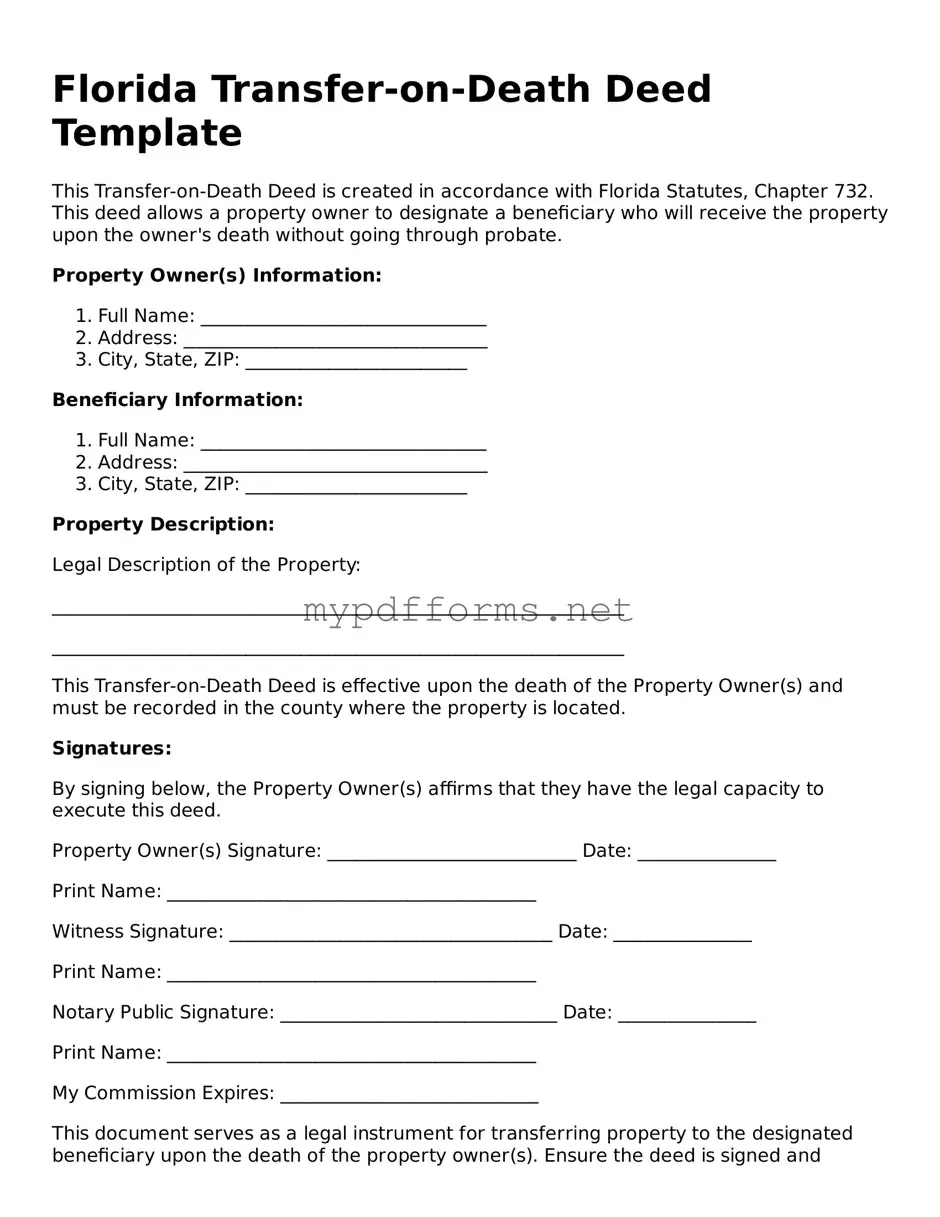Attorney-Verified Transfer-on-Death Deed Document for Florida
The Florida Transfer-on-Death Deed form allows property owners to designate beneficiaries who will receive their real estate upon their death, without the need for probate. This form provides a straightforward way to transfer ownership while retaining control during the owner's lifetime. For those interested in simplifying their estate planning, consider filling out the form by clicking the button below.
Modify Document Here
